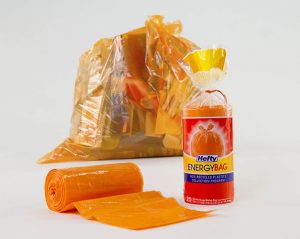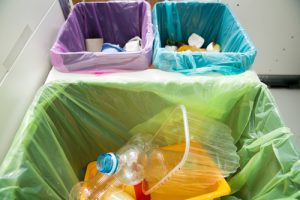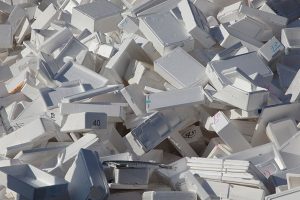 Anti-incineration activists are criticizing an industry program that diverts traditionally non-recycled plastics away from landfill and into energy-recovery facilities. In response, project backer Dow Chemical Co. has defended the program’s utility.
Anti-incineration activists are criticizing an industry program that diverts traditionally non-recycled plastics away from landfill and into energy-recovery facilities. In response, project backer Dow Chemical Co. has defended the program’s utility.

 Associate Editor Jared Paben has worked for Resource Recycling since December 2014. Most of his earlier career was spent as a reporter for the daily newspaper in Bellingham, Wash., but he also has experience working for the Oregon volunteerism commission and for Oregon nonprofits serving low-income populations. He can be contacted at [email protected].
Associate Editor Jared Paben has worked for Resource Recycling since December 2014. Most of his earlier career was spent as a reporter for the daily newspaper in Bellingham, Wash., but he also has experience working for the Oregon volunteerism commission and for Oregon nonprofits serving low-income populations. He can be contacted at [email protected]. Anti-incineration activists are criticizing an industry program that diverts traditionally non-recycled plastics away from landfill and into energy-recovery facilities. In response, project backer Dow Chemical Co. has defended the program’s utility.
Anti-incineration activists are criticizing an industry program that diverts traditionally non-recycled plastics away from landfill and into energy-recovery facilities. In response, project backer Dow Chemical Co. has defended the program’s utility.
 Three groups on two continents will work to create one harmonized process for testing the recyclability of plastic products.
Three groups on two continents will work to create one harmonized process for testing the recyclability of plastic products.
 As part of an effort to help boost market demand, the Association of Plastic Recyclers will hold a joint meeting with an industry group that counts 150 consumer brand companies as members.
As part of an effort to help boost market demand, the Association of Plastic Recyclers will hold a joint meeting with an industry group that counts 150 consumer brand companies as members.
 In Canada, a number of companies are tackling difficult plastic streams without using traditional mechanical recycling processes. One of them, Pyrowave, uses microwaves to depolymerize polystyrene scrap and has recently made some strong steps forward.
In Canada, a number of companies are tackling difficult plastic streams without using traditional mechanical recycling processes. One of them, Pyrowave, uses microwaves to depolymerize polystyrene scrap and has recently made some strong steps forward.
A polymer modifier technology was used compatibilize different resins in multilayer packaging so they could be recycled into new garbage bags. Those bags were then used by volunteers to clean plastics from coastlines.

Doug Woodring
The role of plastics in the larger sustainability movement has been the focus of plenty of industry conversations over the past decade. And it’s out of that environment that the Plasticity series of events has formed.

Nina Bellucci Butler speaks at the Resource Recycling Conference.
U.S. and Canadian end users could consume more of the recovered plastics generated domestically if prices and specifications meet their needs. But a handful of converging market trends are standing in the way of significant growth.
 California lawmakers have approved a bill mandating that carpet stewards achieve a 24 percent recycling rate and discouraging the use of incineration. The legislation will now head to Gov. Jerry Brown’s desk.
California lawmakers have approved a bill mandating that carpet stewards achieve a 24 percent recycling rate and discouraging the use of incineration. The legislation will now head to Gov. Jerry Brown’s desk.
 California regulators are threatening to bring the hammer down on a carpet stewardship group, saying it has failed for years to grow carpet recycling.
California regulators are threatening to bring the hammer down on a carpet stewardship group, saying it has failed for years to grow carpet recycling.
 Manufacturers will voluntarily subsidize post-consumer carpet sortation for an additional year.
Manufacturers will voluntarily subsidize post-consumer carpet sortation for an additional year.
